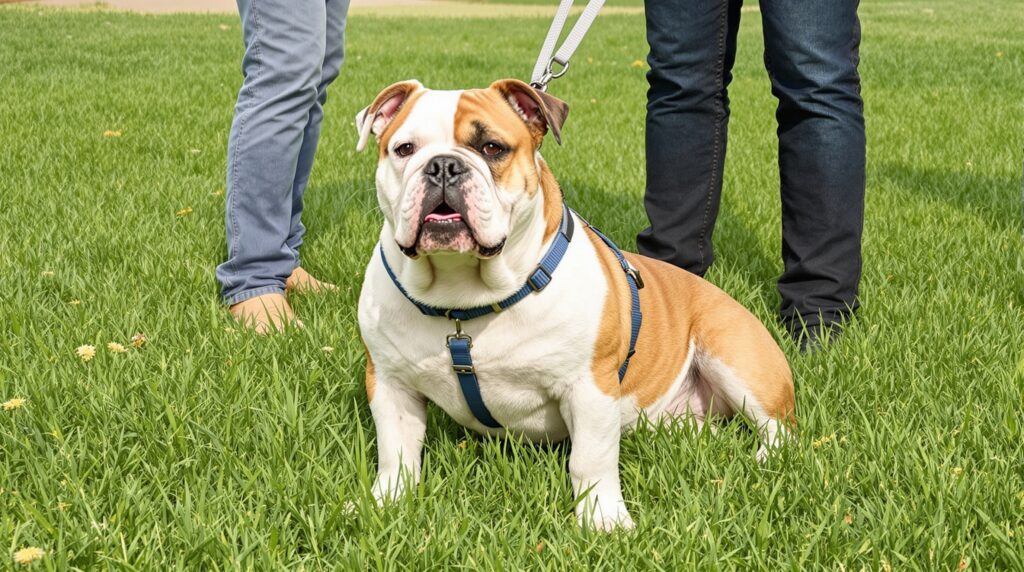Building confidence in a Cavalier King Charles Spaniel takes patience, consistency, and the right kind of activities. Cavaliers are naturally sweet and eager to please, but sometimes they get a bit shy or uncertain in new situations.
Simple daily exercises can really change how your Cavalier responds to the world. Social play, mental challenges, and little adventures all help build trust and independence.
This guide covers practical ways to boost your dog’s confidence while keeping training light and fun.
Socialization Playdates with Other Dogs
Playdates with other dogs give Cavaliers a safe way to practice social skills. Meeting calm, friendly dogs helps them learn to interact politely.
Short, positive play sessions work best. A neutral spot like a park or backyard keeps things relaxed.
Watch your dog’s body language. If your Cavalier seems unsure, take breaks or slow things down to avoid overwhelm.
Regular playdates with gentle dogs build good social habits. The more they practice, the more comfortable they get around new friends.
These outings also give healthy exercise and keep their minds busy.
Balance Exercises Using a Peanut Ball
A peanut ball is a handy tool for helping Cavaliers improve balance and body awareness. Its shape makes it more stable than a regular exercise ball, so it’s safer for small dogs.
Start with your dog’s front paws on the ball and back paws on the ground. This builds core strength and teaches balance.
Once your Cavalier gets the hang of it, you can help them put all four paws on the ball. Gently rocking the ball encourages your dog to stay steady and use their muscles.
Keep these sessions short—just a few minutes is enough. It’s a fun challenge and a nice break from regular walks.
Basic Obedience Training Sessions
Short obedience sessions help Cavaliers build trust and confidence. Keep lessons simple and upbeat so your dog stays interested.
Start with basics like sit, stay, and come. These commands give structure and help your Cavalier learn to respond calmly.
Training should last only a few minutes at a time. Cavaliers do best in short bursts, and ending on a win keeps them motivated.
Use treats and praise to reward good behavior. Positive reinforcement creates a safe space for learning.
Try practicing commands in different rooms or outside. Changing locations helps your dog adjust to new places and builds confidence.
Consistency really matters. When everyone uses the same words and rewards, your dog learns faster and feels more secure.
Interactive Puzzle Toys for Mental Stimulation
Puzzle toys let Cavaliers use their brains and solve problems. These toys hide treats or food, so your dog has to figure out how to get the reward.
Cavaliers are clever and curious, so puzzle toys keep them from getting bored. Solving puzzles gives them a little boost of confidence.
There are lots of styles—sliding parts, spinning pieces, or treat balls. Start easy and let your dog work up to harder puzzles.
Puzzle toys can also slow down mealtime and make eating more interesting. It’s a simple way to add some fun to their day.
Short Daily Walks in New Environments
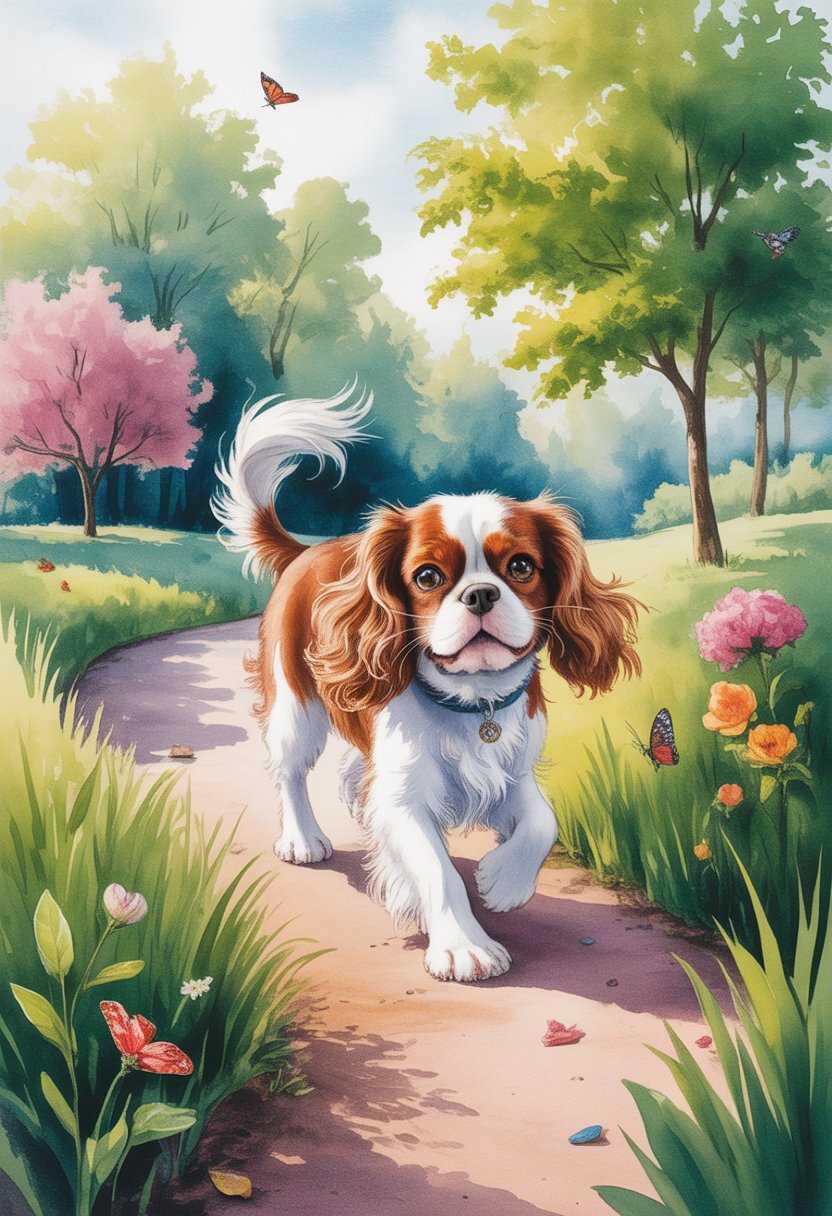
Short daily walks keep Cavaliers active and happy. These walks let them stretch their legs and burn off energy.
Exploring new places adds mental stimulation. Try a different route or park now and then to keep things interesting.
Short walks help build confidence by gently exposing your dog to unfamiliar sights and sounds. Meeting new people or seeing other dogs teaches them to handle everyday experiences.
Keep the walks brief—15 or 20 minutes is plenty. That way, it stays fun and not exhausting.
These outings also strengthen your bond. Sharing new experiences together builds trust and reassures your dog.
Positive Reinforcement with Treats

Treats make it clear to your Cavalier that they did something right. When your dog sits, stays, or follows a command, a small treat lets them know they nailed it.
Give treats right after the good behavior. Timing helps your dog connect the action and the reward.
Mix in praise or gentle petting so your Cavalier doesn’t rely only on food. Over time, they’ll work for both treats and your attention.
Keep training sessions short and sweet. A few minutes at a time helps your dog stay focused and happy.
Hide and Seek Games Indoors
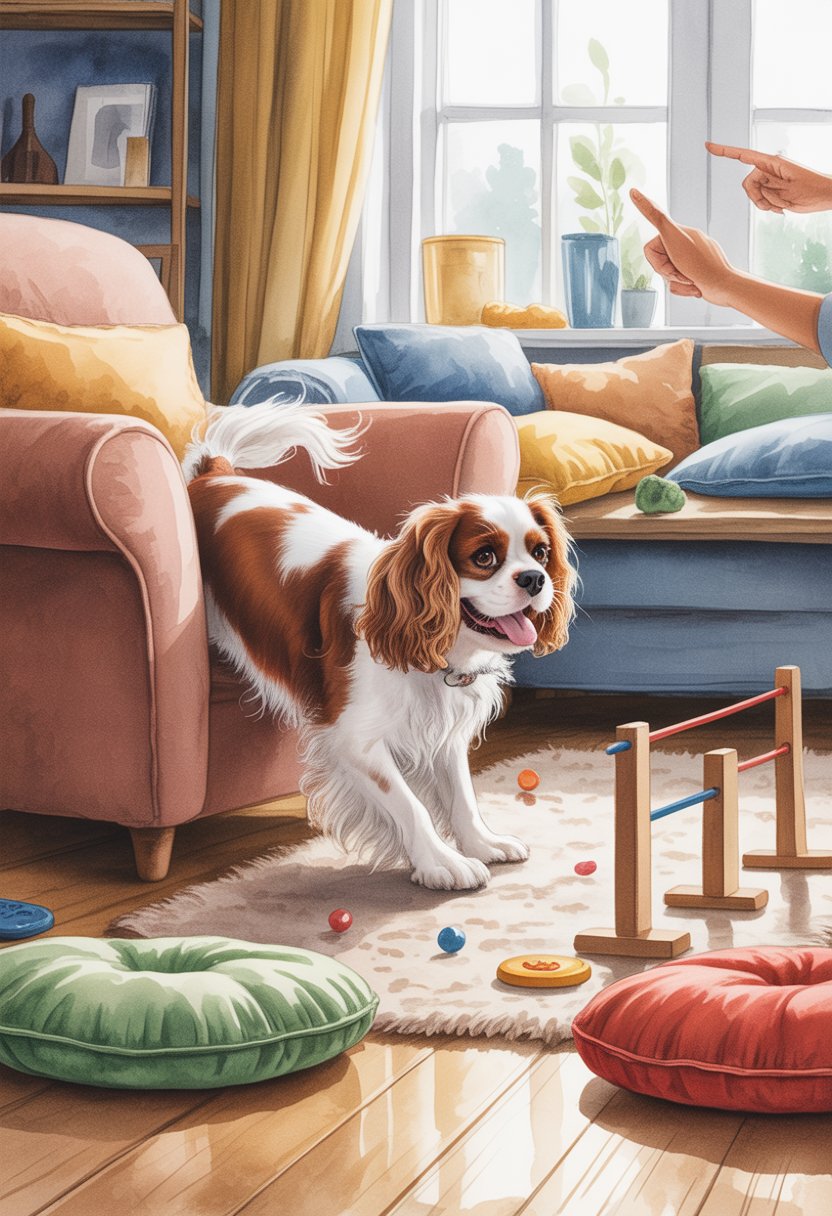
Hide and seek is a simple way to build your Cavalier’s confidence. The dog learns to trust its senses and focus while searching for you or a favorite toy.
Start easy—hide in plain sight and call your puppy’s name. When they find you, celebrate with praise and a treat.
As your dog gets better, pick trickier hiding spots. It keeps the game fun and encourages problem-solving.
Hide and seek is perfect for rainy days when outdoor play isn’t an option. It gives your Cavalier a little workout and some mental exercise.
Let the whole family join in by taking turns hiding. It’s a great way to bond with your dog.
Understanding Your Cavalier King Charles Spaniel’s Temperament
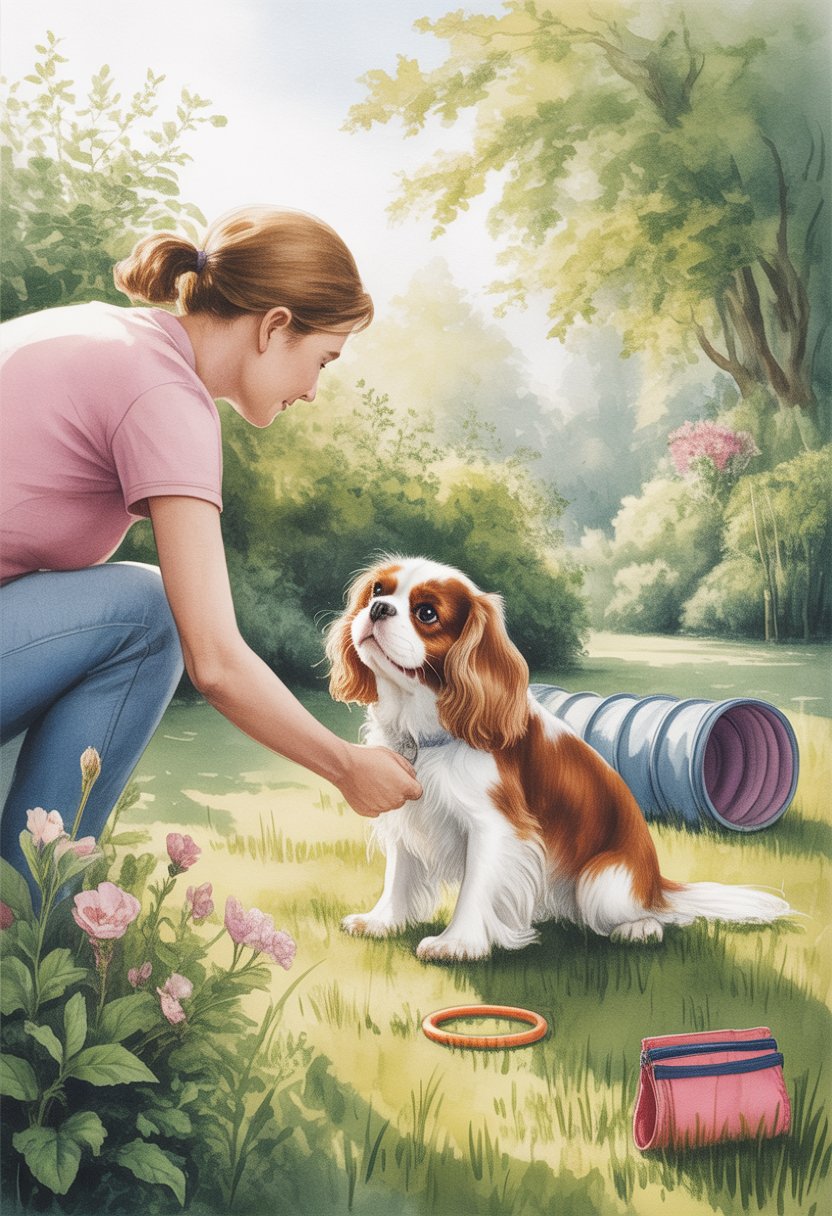
Cavalier King Charles Spaniels are known for being affectionate and gentle. Their temperament shapes how they handle training and new experiences.
Breed Personality Traits
You’ll often hear people call them affectionate, playful, and people-oriented. They bond closely with their families and usually want to be right by your side.
Cavaliers tend to get along with strangers, kids, and other pets. Their friendly nature makes them great for many households.
But they don’t love being left alone for long. If you’re gone a lot, they might get lonely.
They’re also pretty sensitive to your tone and body language. Harsh corrections can make them nervous, but positive reinforcement works wonders.
A Cavalier’s energy level is moderate. They like play sessions, short walks, and games that make them think.
They’re not super high-energy, but they still need daily activity to stay happy.
Common Confidence Challenges
Cavaliers might get shy if they aren’t exposed to new things early on. Limited socialization can make them nervous around new people or loud noises.
Separation anxiety is common. Because they love company, being alone can stress them out and lead to whining or pacing.
Sometimes they become timid if they experience rough handling or mixed signals from people. A lack of structure can leave them feeling unsure.
To help them feel secure, try gentle exposure to new settings, steady routines, and lots of encouragement. A supportive environment helps them blossom.
Creating a Positive Training Environment
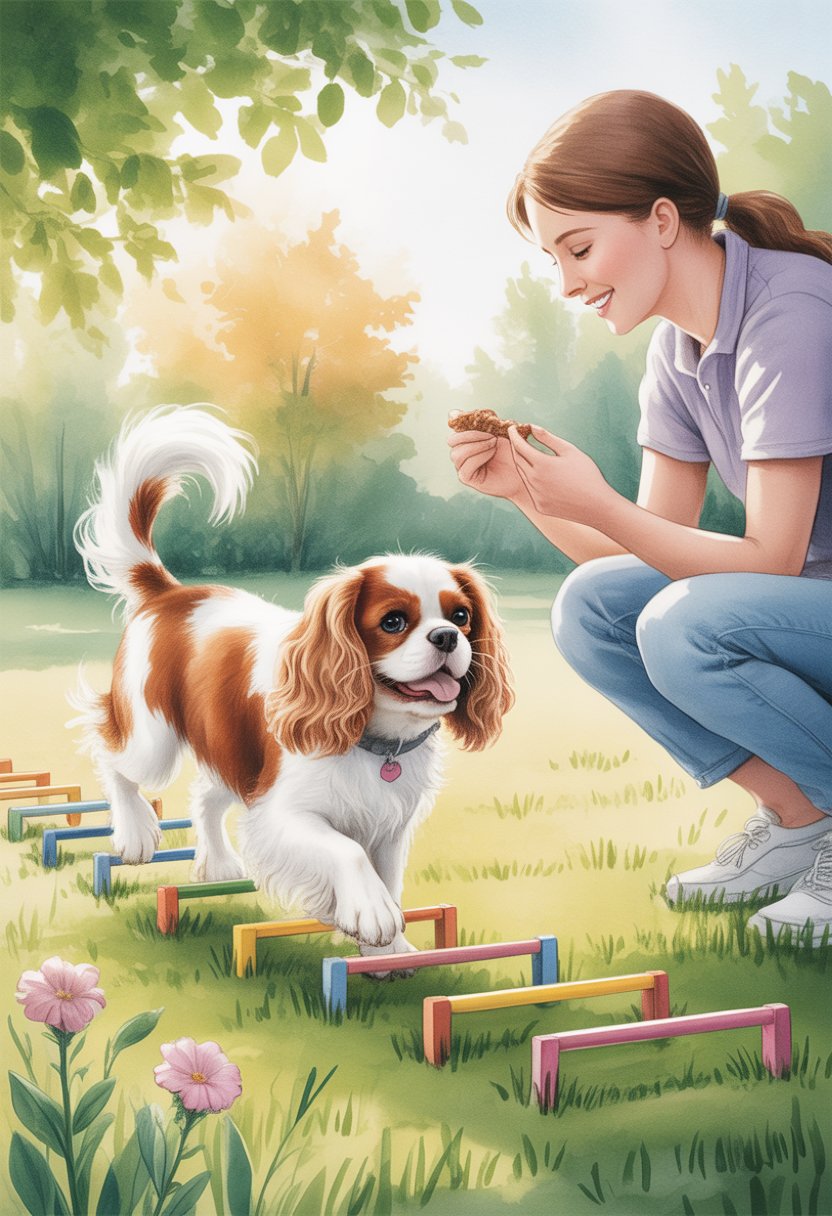
Cavaliers learn best when they feel calm and safe. Patience, clear communication, and rewards go a long way.
Building Trust With Your Dog
Trust grows when your dog feels secure. Don’t rush your Cavalier into new things or use harsh corrections—fear just gets in the way.
Short, gentle training sessions help your dog understand what you want without stress.
Stick to consistent routines for feeding, walks, and play. A schedule gives your dog stability and makes it easier for them to focus.
Quiet time together matters too. Whether you’re brushing, sitting nearby, or just giving soft praise, these moments show your Cavalier you’re a reliable companion.
Over time, this steady bond gives your dog the confidence to try new things.
Using Positive Reinforcement Methods
Positive reinforcement pushes your dog to repeat good behaviors. Instead of pointing out mistakes, you reward what your dog does right.
Rewards can be:
- Small treats given right after the correct behavior
- Verbal praise with a warm, happy tone
- Toys or playtime as a fun motivator
Timing matters a lot. You want to give the reward right after the behavior, so your dog connects the dots.
Say your Cavalier sits when you ask—hand over that treat within seconds.
Keep training sessions short, maybe 5 to 10 minutes tops. That way, your dog won’t get bored or lose focus.
Try to end on a win. It keeps your pup excited for the next go-around.



